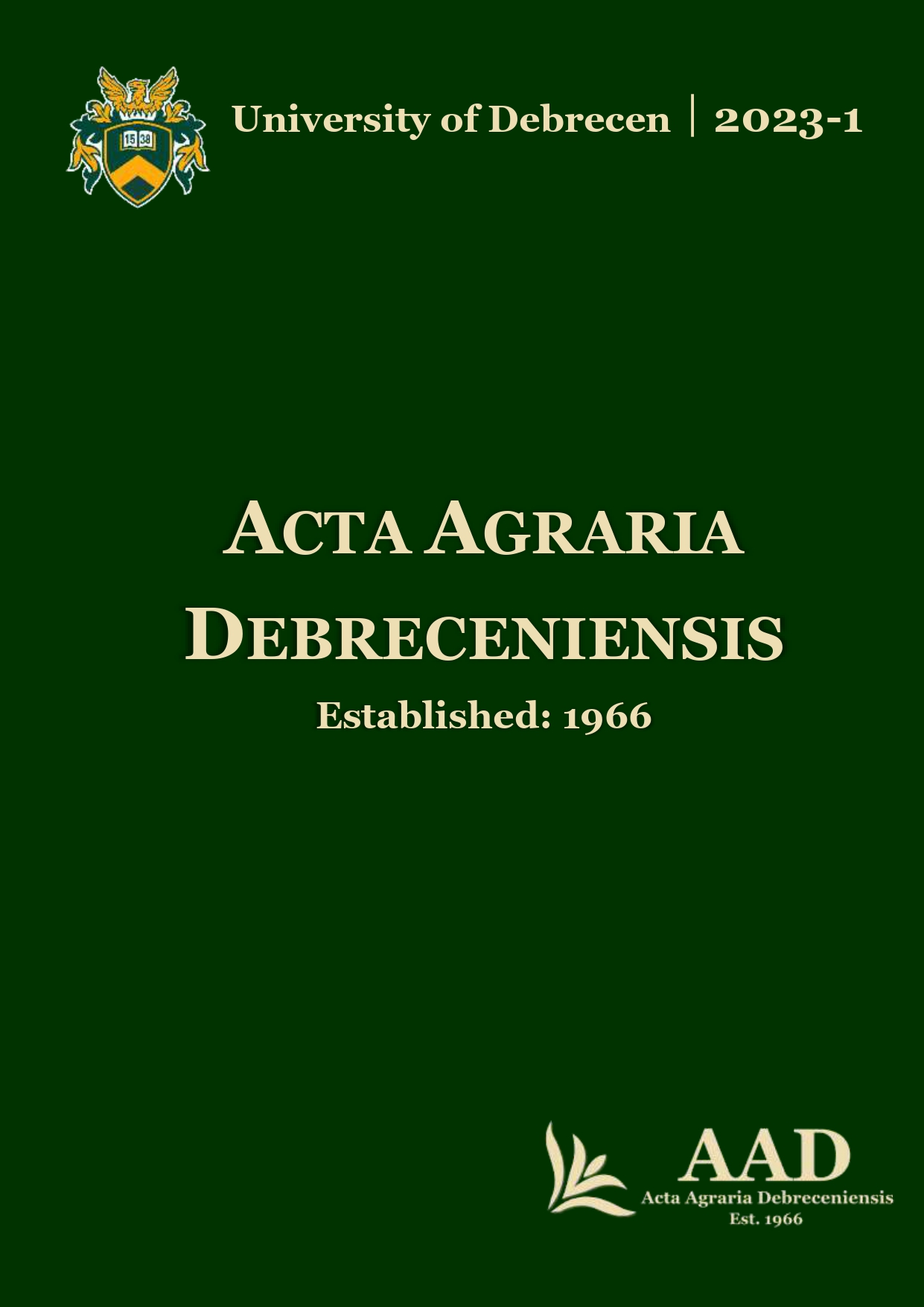Study of drought stress correlation on yield and yield components of maize cultivars (Zea mays L.)
Authors
View
Keywords
License
Copyright (c) 2023 by the Author(s)

This work is licensed under a Creative Commons Attribution 4.0 International License.
How To Cite
Accepted 2022-11-18
Published 2023-06-05
Abstract
This article was investigated to study the correlation and analysis of drought stress regression on maize cultivars' yield and components. The variance analysis results showed a significant difference between drought stress levels in terms of plant height, total dry weight and number of seeds per row, the total weight of cob, grain yield, harvest index, stem diameter, and cob weight with protective leave. Also, there was a significant difference in ear weight without protective leaves, ear diameter, ear length, plant weight, 100-seed weight, and seed per ear on hybrid treatments. There were statistically significant differences between cultivars in plant height, leaf area, ear diameter, ear length, number of seeds per row, number of seeds per ear, the total weight of cob wood, 100-seed weight, harvest index, plant dry weight. The results of the correlation of traits for the mean levels of drought stress showed a positive and significant correlation between plant yield and plant height, seed per row, ear length and weight of 5 pieces of wood and also with a total weight of cob wood, ear weight with bark showed the highest correlation. There is a significant correlation between leaf area and stem diameter, plant weight, total dry weight at the probability level of 0.05. Correlation coefficients between traits in non-stress conditions showed a positive and significant correlation between grain yield and height, ear length and grain in the row, which was a significant increase compared to stress conditions. The correlation of traits under full stress conditions also showed that the correlation coefficient between cob length trait and positive height was positive and significant. From the study of correlation coefficients between maize traits in non-stress conditions, it can be concluded that the most important components of grain yield are cob length and grain per row. While the correlation coefficients under moisture stress conditions show that the grain trait in the row has a positive and significant correlation with yield, under stress conditions in the cob stage did not show any traits with correlation yield.
References
- Alvi, M.B.–Rafique, M.–Tariq, M.S.–Hussain, A.–Mahmood, T.–Sarwar, M. (2003): Character association and path coefficient analysis of grain yield and yield components maize (Zea mays L.). Pakistan Journal of Biological Sciences (Pakistan).
- Amini, E.–Mehrabi, A.A.–Hatami, A.–Fasihi, K. (2014): Evaluation of yield, yield components and water content of four grain corn hybrids in different levels irrigation. Cereal Research, 4(4), 333–344.
- Bodnár, K.B.–Mousavi, S.M.N.–Nagy, J. (2018): Evaluation of dry matter accumulation of maize (Zea mays L.) hybrids. Acta Agraria Debreceniensis, (74), 35–41. https://doi.org/10.34101/actaagrar/74/1661
- Choukan, R.–Mosavat, S.A. (2005): Mode of Gene Action of Different Traits in Maize Tester Lines. Seed and Plant Improvement Journal, 21: 547–556.
- Dolatabad, S.S.–Choukan, R.–Hervan, E.M.–Dehghani, H. (2010): Multienvironment analysis of traits relation and hybrids comparison of maize based on the genotype by trait biplot. American Journal of Agricultural and Biological Sciences, 5(1), 107–113. https://doi.org/10.3844/ajabssp.2010.107.113
- Hejazi, P.–Mousavi, S.M.N.–Mostafavi, K.–Ghomshei, M.S.–Hejazi, S.–Mousavi, S.M.N. (2013): Study on hybrids maize response for drought tolerance index. Adv. Environ. Biol, 7, 333–338.
- Jalali, M.–Sheikholeslami, Z.–Elhamirad, A.H.–Haddad Khodaparast, M.H.–Karimi, M. (2020): The effect of the ultrasound process and pre-gelatinization of the corn flour on the textural, visual, and sensory properties in gluten-free pan bread. Journal of Food Science and Technology, 57(3), 993–1002. https://doi.org/10.1007/s13197-019-04132-7
- Khazaei, A.–Golzardi, F.–Shahverdi, M.–Nazari, L.–Ghasemi, A.–Shariati, A.–Mokhtarpour, H. (2022): Evaluation of Genotype× Environment Interaction for Forage Yield of Promising Forage Sorghum Lines (Sorghum Bicolor (L.) Moench) using AMMI Model. Journal of Crop Breeding. https://doi.org/10.52547/jcb.14.42.177
- Mahrokh, A.–Hassanzadeh Moghadam, H.–Najafinezhad, H.–Shirkhani, A.–Ahmadi, B.–Azizi, F.–Golzardi, F. (2022): Bouquet ears in maize inbred lines as affected by agronomic factors. Journal of Crop Improvement, 1–17. https://doi.org/10.1080/15427528.2022.2063776
- Mousavi, S.M.N.–Bojtor, C.–Illés, Á.–Nagy, J. (2021): Genotype by Trait Interaction (GT) in Maize Hybrids on Complete Fertilizer. Plants, 10(11), 2388. https://doi.org/10.3390/plants10112388
- Mousavi, S.M.N.–Illés, Á.–Bojtor, C.–Nagy, J. (2020): The impact of different nutritional treatments on maize hybrids morphological traits based on stability statistical methods. Emirates Journal of Food and Agriculture, 666–672. https://doi.org/10.9755/ejfa.2020.v32.i9.2147
- Mousavi, S.M.N.–Kith, K.–Nagy, J. (2019): Effect of interaction between traits of different genotype maize in six fertilizer level by GGE biplot analysis in Hungary. Progress in Agricultural Engineering Sciences, 15(1), 23–35. https://doi.org/10.1556/446.15.2019.1.2
- Nagy, J. (2007): Maize production. Akadémiai Kiadó.
- Ort, D.R.–Long, S.P. (2014): Limits on yields in the corn belt. Science, 344(6183), 484–485. https://doi.org/ 10.1126/science.1253884
- Rafiq, C.M.–Rafique, M. Hussain, A.–Altaf, M. (2010): Studies on heritability, correlation and path analysis in maize (Zea mays L.). Journal of agricultural research, 48(1), 35–38.
- Ramazani, M.–Samieezadeh lahiji, H.–Ebrahami Koolabee–Ghasemi, A. (2008): Morphologicaland agronomic traits of maize hybrids on the basis of factor analysis in Hamadan. Journal of Science and Technology of Agriculture and Natural Resources. 12: 99–108.
- Shojaei, S.H.–Mostafavi, K.–Mazloom, P.–Kermani, P.–Shojaei, S.–Sadati, S.M. (2016): the study of the drought tolerance of canola (Brassica napus L.) cultivars by using stress tolerance indices. Scientific Papers-Series A, Agronomy, 59, 409–414.
- Shojaei, S.H.–Mostafavi, K.–Omrani, A.–Illés, Á.–Bojtor, C.–Omrani, S.–Mousavi, S.M.N.–Nagy, J. (2022a): Comparison of Maize Genotypes Using Drought-Tolerance Indices and Graphical Analysis under Normal and Humidity Stress Conditions. Plants, 11(7), 942. https://doi.org/10.3390/plants11070942
- Shojaei, S.–Mostafavi, K.–Khosroshahli, M.–Bihamta, M.R.–Ramshini, H. (2022b): Study of quantitative traits related to grain yield stability in maize using multivariate statistical methods and graphical analysis. Journal of agricultural science and sustainable production.11–80–91. https://doi.org/10.22034/saps.2021.48063.2736
- Shojaei, S.H.–Mostafavi, K.–Omrani, A.–Omrani, S.–Nasir Mousavi, S.M.–Illés, Á.–Bojtor, Cs.–Nagy, J. (2021): Yield stability analysis of maize (Zea mays L.) hybrids using parametric and ammi methods. Scientifica, 2021. https://doi.org/10.1155/2021/5576691
- Talaat, N.B. (2020): 24-Epibrassinolide and Spermine combined treatment sustains maize (Zea mays L.) drought tolerance by improving photosynthetic efficiency and altering phytohormones profile. Journal of Soil Science and Plant Nutrition, 20(2), 516–529. https://doi.org/10.1007/s42729-019-00138-4

 https://doi.org/10.34101/actaagrar/1/11495
https://doi.org/10.34101/actaagrar/1/11495